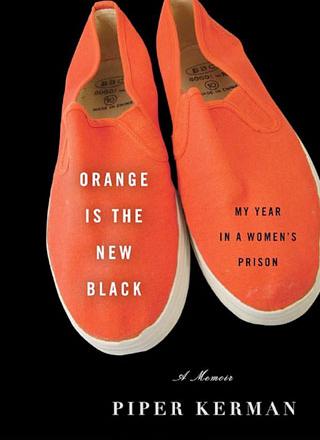You are here
Countering dehumanisation with kindness
By Sally Bland - Dec 28,2014 - Last updated at Dec 28,2014

Orange Is the New Black: My Year in a Women’s Prison
Piper Kerman
New York: Spiegel & Grau, 2011
Pp. 326
With persuasive logic, an acute sense of irony, and a keen eye for injustice, Piper Kerman hosts the reader for a year in a minimum security federal prison. It is not exactly what she expected, neither the fact of being incarcerated, nor the reality of inmates’ daily life. Warned by almost everyone, especially the staff, to watch out for the other prisoners, she initially keeps to herself.
However, as she looks around her and cautiously opens up, Kerman finds in a large number of her fellow inmates an amazing degree of humanity, generosity and caring that sustains her and gives her a new perspective on life.
Kerman was both very atypical and very typical of the other women at the prison in Danbury, Connecticut, which she entered in 2004. Being white, with a relatively affluent background and college degree, set her apart from the others — mostly women of colour, poor, with limited education.
Both prison staff and inmates repeatedly expressed surprise at her being there. Searching for adventure after graduating from Smith College, Kerman forged relationships that led her into a world of high living financed by drug smuggling, whereas most of the others had fallen into crime by default, having few other economic opportunities.
Despite these differences, Kerman’s conviction for non-violent drug offences placed her in the majority at Danbury, and in the federal prison population as a whole. Her memoir is tantamount to an indictment of what she terms “the labyrinth of the US criminal justice system”. (p. 21)
When it came to sentencing, differences again emerged: “It was hard for me to believe that the nature of our crimes was what accounted for my 15-month sentence versus some of my neighbours’ much lengthier ones.” (p. 138)
She is well aware of her privileged status, having an excellent lawyer and unlimited family support. Her critique of the prison system, however, doesn’t stop there. Without ranting, she questions the logic of incarcerating such a vast number of non-violent offenders from the viewpoint of public funds wasted, lives devastated and prisons not preparing prisoners to re-enter society.
Kerman reserves the harshest critique for mandatory minimum sentencing without regard for the circumstances of a case, part of the guidelines adopted in the “War on Drugs” and “the primary reason that the US prison population has ballooned since the 1980s to over 2.5 million people, a nearly 300 per cent increase. We now lock up one out of every hundred adults, far more than any other country in the world.” (p. 23)
From her perspective of similarity and difference, Kerman carefully observes the prison’s functioning — the often arbitrary rules, unequal power relations and harassment that seem to serve no other purpose than to humiliate and disempower; the sluggish bureaucracy that can deprive an inmate of a much needed phone call or family visit; and the total lack of privacy. “In such a harsh, corrupt, and contradictory environment, one walks a delicate balance between the prison’s demands and your own softness and sense of your own humanity.” (p. 121)
Kindness is not a quality one associates with prison, but it features prominently in Kerman’s account of her experience with women inmates. Though having failed in the “real” world, most of them are remarkably savvy in dealing with their situation, and avoiding the ultimate punishment of being sent to the isolation block or maximum security facility next door.
Kerman’s stories about how women inmates dealt with and circumvented the rules and regulations are sometimes amusing and always instructive, from how they stepped forward to give her personal hygiene items on her first day, to the elaborate birthday parties they arranged for each other.
In a system where giving a hug to someone who has received word of a family death or similar tragedy is forbidden, every little compassionate act stands out. “Small kindnesses and simple pleasures shared were so important… they brought home to me powerfully that I was not alone in this world…” (p. 292)
Kerman writes very well, but it is her honesty that distinguishes this book, whether in telling about prison as it really is, or facing up to the wrongness of her involvement, however peripheral, in the heroin trade which has killed and devastated so many individuals and even communities.
Others have written about the injustice and cruelty of the prison system, but her account stands out for telling the stories of the women of all types and ages, some of them mothers and grandmothers, who struggle to survive its vicissitudes.
“Orange Is the New Black” is available at Readers/Cozmo.
Related Articles
The Way to ParadiseMario Vargas LlosaTranslated by Natasha WimmerLondon: Faber and Faber, 2003Pp.
The Japanese LoverIsabel AllendeTranslated by Nick Caistor and Amanda HopkinsonNew York: Atria Books, 2015Pp.
Sing, Unburied, SingJesmyn WardLondon: Bloomsbury Circus, 2017Pp.














